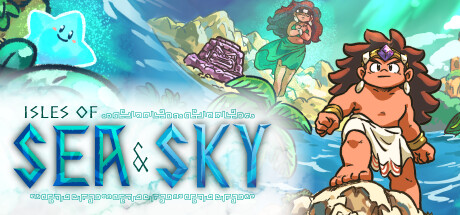Setting Sail on the Isles of Sea and Sky
Okay, I get it—you’re thinking, “Not another pixel-art puzzle metroidvania!” But Isles of Sea and Sky, released May 22, 2024, shines like hidden treasure. You wake up alone on a beach with no memory, no instructions, and no one guiding you. It’s just you, the sound of the ocean, and a world full of puzzles to solve—mostly by pushing blocks around carefully designed islands.
There’s no dialogue or story text here, but the world tells a story through the visuals, locations, and mysterious ruins. It feels like you’re slowly uncovering the secrets of a forgotten place.
Comparative Compass: How It Charts Against the Competition
Let’s see how it stacks up to some well-known titles
- The Witness: Both games let you explore freely and solve puzzles at your own pace. But while The Witness throws tricky line puzzles and symbols at you, Isles keeps things simpler. It focuses on logical, tile-based movement and spatial thinking—less brain strain, more “aha!” moments.
- Breath of the Wild: You get that same open-world feel, where you’re free to wander anywhere. But instead of battling enemies or climbing mountains, you’re solving calm, focused puzzles that feel more relaxed and thoughtful. Think of it as BOTW with fewer explosions and more quiet reflection.
- Return of the Obra Dinn: Like Obra Dinn, there’s no talking, just clues hidden in what you see. But where Obra Dinn is dark and serious, Isles feels more magical and peaceful. You’re not solving a mystery about a doomed ship—you’re piecing together an ancient world that feels alive.
- FEZ: If you liked FEZ’s clever design, you’ll feel right at home here. While you don’t flip between dimensions, Isles still surprises you with how new powers change the way you approach puzzles. It keeps things fresh without needing complex mechanics.
Splashes, Pushes, and Plot Twists: Gameplay Mechanics
At its core, Isles of Sea and Sky is a classic block-pushing puzzle game—kind of like Sokoban—but with more depth. Blocks only move up, down, left, or right, but you’ll slowly gain tools and friends that let you do more. A frog that jumps over crates, birds that lift blocks, and boats that carry you between puzzle-filled islands all add variety.
You’re never stuck for long. If one puzzle’s too tough, just hop to another island and try something new. There’s no set order, so you can collect stars, discover secrets, and unlock powers however you want. This freedom makes the game feel open, even though each puzzle is tightly built.
![]()
Visual Vibes and Audio Tides
The art is pixel-style but sharp and colorful. Think bright blue water, sunny beaches, green forests, and mysterious ruins. Tiny details like wind-blown hair or glowing statues make the world feel cozy and full of life.
Sound-wise, the music is calm and dreamy—mostly soft synths and nature sounds. It’s perfect for relaxing while you think through a tricky puzzle. There are no loud effects or annoying loops, just a peaceful soundtrack that makes you want to stay a little longer on each island.
User Reviews: Riding the Tide of Feedback
Players are loving it. On Steam, it’s sitting at 98% “Very Positive” for recent reviews and 93% overall, based on nearly 900 ratings. Reviewers highlight a few key strengths:
-
Easy to Play, Hard to Master: Simple movement controls make it great for newcomers, but the puzzles still challenge experienced players.
-
Great Atmosphere: Many call it a “peaceful retro island,” with relaxing vibes and satisfying puzzles.
-
Story Without Words: The game tells a meaningful story using only pictures and scenes. Some people describe it as “quietly emotional” or “a mystery you feel more than solve.”
Of course, not everything is perfect. A few puzzles are a bit too long or hard with no way to get hints. Some players mention getting stuck and wishing for a little more help. But overall, these are small issues in an otherwise smooth and thoughtful experience.
![]()
Industry Impact: A Metroidvania Puzzle on the Horizon?
Isles of Sea and Sky proves that puzzle games can feel expansive without piling on complexity. It blends open-world freedom with clever, handcrafted puzzles—and skips the usual combat and boss battles. Rather than pushing players to grind quests or chase item drops, it encourages curiosity and rewards smart exploration.
Indie developers are already taking notes. Expect more games to follow this lead, embracing calm, creative puzzle experiences that teach through play—not through walls of text.
![]()

